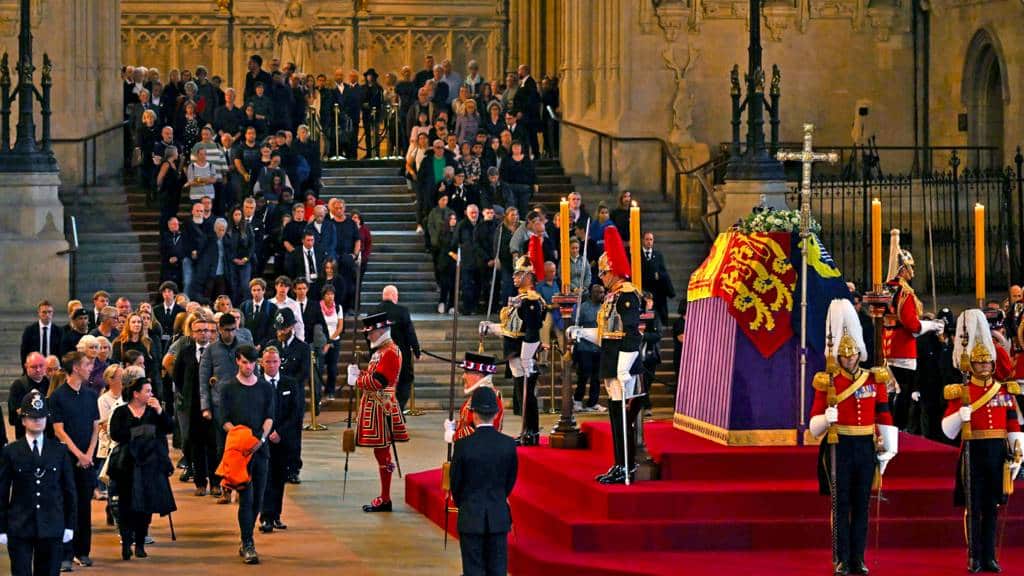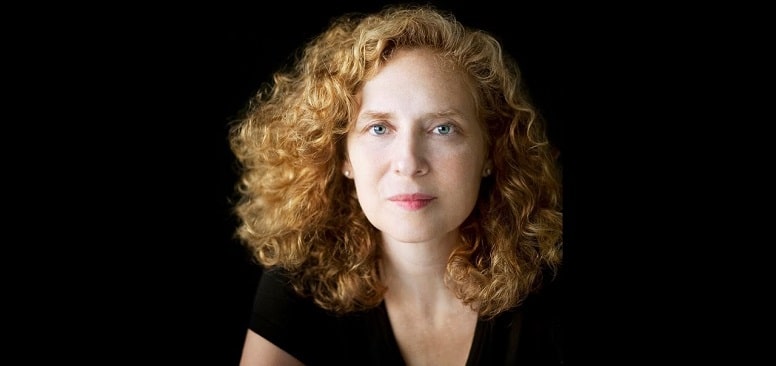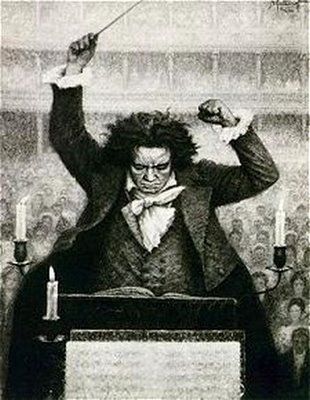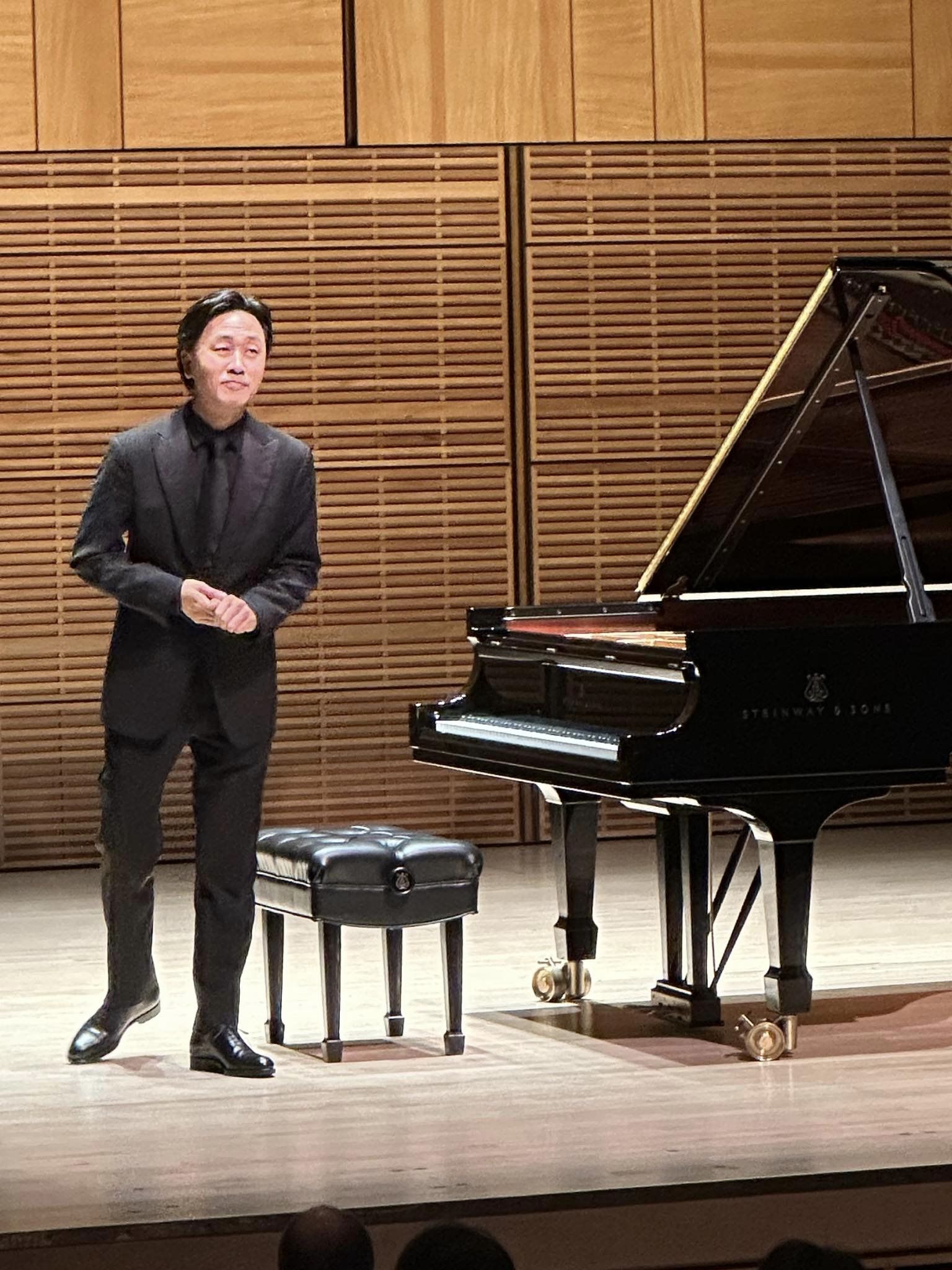Was it Mendelssohn or Mahler who played Queen Elizabeth out?
UncategorizedThe march that accompanied Her Majesty on her last journey down the Mall sounded to all symphonic ears like the opening of Mahler’s Fifth.
Listen here at 11:04.
It was, in fact, Mendelssohn’s Song Without Words, opus 62/3. It was intended for drawing room use and orchestrated by later hands for marching bands. In the original piano version it is by no means funereal.
The question, yet to be resolved, is how it penetrated Mahler’s ear so deep that it returned as the opening of his fifth symphony, and again in a modulated reprise. Mahler gave the tune to solo trumpet with a mournful purpose. Had he ever heard it in a funeral?






Mahler would have loved to use 30 trumpets and 20 trombones … what a sound!
Berlioz would double that, with around 100 drum sets.
From one side one of the first compositions of Mahler was a funeral march and he may well have played it as a child…on the other, the “tune” is just a minor ascending third…Also the Eroica theme is the same as the B&B overture by Mozart, but it is just an arpeggio of a perfect chord, so very very basic motivic material
Who orchestrated for marching band, who decided that this was to be the opening music for the funeral of the century, and was this played at King George VI’s funeral, when was it first played as funeral march….
So many questions really
Whatever the history, it was a brilliant stunning choice that defied all conventional expectations yet absolutely fitting…imho
I’d like to think Mendelssohn’s visits to Buckingham Palace to play for Queen Victoria and Prince Albert and the subsequent positive reception must have etched in the historical collective generational memory of the Monarchy in their selection of this music. The Russian Kontakion of the Departed also was sung in the service acknowledging, perhaps, the bloodline connection to the Russian Royal family with Empress Alexandra and the Duchess Elizabeth, a Christian Martyr and recognized Saint in the Russian Orthodox Church, and commonly known as Ella in UK’s history. Memory Eternal for Her Majesty the Queen, Elizabeth.
Who chose it? The Queen. She approved all the details in advance, according to the Duke of Norfolk who was tasked with leading the preparations for the monarch’s funeral.
Mahler was more likely influenced by Austro-Hungarian military music:
https://youtu.be/Uskmq_j2L-Y
https://youtu.be/vixMGN9M7yI
And there was Beethoven’s and Chopin’s Funeral Music that all get played at the Cenataph in London on Remembrance Sunday in November.
Yes, Mendelssohn transposed and rearranged for brass and drums into Bb minor from the original Andante maestosofor piano ib E minor. Brass played slightly slower as the speed of all the marching music had to be at crotchet = 75 to avoid any interruption in the human marching for such a distance, partucularly the uphill three-mile walk to Windsor Castle – and which the poor horses could cope with.
The Mendelssohn in this version is in G minor, up a minor third; the relative major is Bb.
To be frank, I fear this is nonsense. The Mahler is in C# minor, the Mendelssohn in (a slightly flat rendition) in G minor.
The opening rising minor third gesture in the Mendelssohn falls again to the root, thereafter it is just plain different.
One might as well ask if Bernstein’s “There’s a Place for Us” is based on Strauss’ Burleske, or whether Ives, in the Emerson movement of his Second Piano Sonata, is quoting the intermezzo of Brahms’ Third Piano Sonata.
Perhaps both Mahler and Mendelssohn are referencing the same piece. But triplet figures in brass fanfares are such staple diet for composers, so I fear not. A passing resemblance perhaps, granted.
Nice thoughtful comments. To me, always interesting how Germanic things are in England, from the name “England” 1500 years ago and the language, musical similarities, and so much of the royal family’s bloodlines.
Due respect Mr. Lebrecht: Having more than a passing familiarity with the majority of Mahler’s orchestral works, I differ about there being a direct connection between the Mendelssohn heard here and Mahler’s 5th Symphony. The triplet gesture used by Mahler is indeed clearly discernible (although harmonized in this iteration) but my thesis is this: to my ears most of the music almost sounds like early sketches for Berlioz’s “Grande Symphonie funèbre et triomphale” of 1840. Berlioz and Mendelssohn were well acquainted and held each other in the highest professional -and perhaps personal- esteem. How much of Monsieur Berlioz’ concert music did Herr Mendelssohn know? Well, it was said by some contemporaries that Mendelssohn knew all of the music ever written (evidently a gross hyperbole) so it stands to reason that he had heard/studied the “Grande Symphonie” (as I have always suspected that a young Mahler did.)
Now, that said: is it conceivable that Berlioz was influenced by Mendelssohn, and not the other way around? Fascinating perspective, isn’t it? And I decline to mention “Les Franc Juges” overture of 1821. Mind its introduction and listen again to the processional music in this video…
I pray I made sense here.
Did anyone notice that most picturesque of rarities: a marching bassoon?
And amongst the extraordinary pageantry seen in this video, the sound of Big Ben’s mournful tolling is now irrevocably etched in my mind.
Yes, the marching bassoon was stunning … very interesting comment btw!
I found that piece very striking when I heard it in the procession. I had to go hunting for it as the BBC moderator only identified the music as “Beethoven, Mendelssohn and Chopin.”
I am glad that this subject has been raised , as I got heartily sick of the march during the procession , and thought ( quite wrongly) that it was the Sigurd Jorsalfar march by Grieg! I should have known better, as I have often played the Mendelssohn Song without Words, albeit not for several decades
An orchestration by Moscheles was played at Mendelssohn’s own funeral. (As I’m sure others will have noted by now.)
Thought it was just a minor key variation of God save the King. It had that rhythm of the words God save the King.
One hears Mahler, yes.
This was painful, and yet an exaltation, to watch, especially the very beginning, and the end.
With thanks, NL, for the post. And thanks to the editors, visual
and audio. Thanks to Her Majesty, the Queen, for living as
she did. Thanks to England, to the UK. To dear London.
Mahler may have heard it in his youth. As a boy he lived near a military parade grounds.
The Mahler 5th trumpet solo has always stuck my ear as an inversion of the string opening of the Beethoven 5th. And Mahler had much more affinity for Beethoven than Mendelssohn, did he not?
Actually Mahler conducted the “Paulus” Oratorio (St. Paul) by Mendelssohn a couple of times, and was said to have been rather fond of it.
It sounds funereal to me in the piano version.
The repeated note at the beginning, and at the end, especially.
The resemblance is striking, but this triplet figure can also be found elsewhere. One finds it (in C major, not C# minor, but still), played by a solo trumpet, in the 2nd mvt of Haydn’s Military Symphony (bars 152-159). I think it was a common figure in military band music attack the time.
at* the time – damn autocorrect!
I had been hoping to hear Purcell’s Funeral March for Queen Mary.
As I noted elsewhere, nowadays it may be too closely associated with the opening of A Clockwork Orange.
Very interesting how people can sleuth all of these arcane musical matters and yet no one seems to know how she died.
I thought it worked very well and complemented the turgid Chopin Funeral March.
The music reminded me more of Berlioz than either Mendelssohn or Mahler.
The Mendelssohn sounds very funereal to me. The opening fanfare must surely have seemed like the beginning of a March before it was turned into one. Or is that just the influence of Mahler on my ears?
A few years ago listening to the complete Midsummer Nights Dream I was surprised by a little bit that sounded like Mahlerian klezmer.
The recording by the Ivan Fischer and the Budapest Festival Orchestra will leave you in no doubt.
Purcell’s March & Canzona used in 1695 for Queen Mary would have been far better. (Flat trumpets, no drums)
https://www.youtube.com/watch?v=AYELAu9hqdU
It’s arresting at first hearing, but it’s about as truly alike to the Mendelssohn as the opening of Mahler’s 3rd is to the big tune in the last movement of Brahms’s 1st!
Haydn used that trumpet call in the 100th Symphony, but it was in major key. Mendelssohn may well have been familiar.